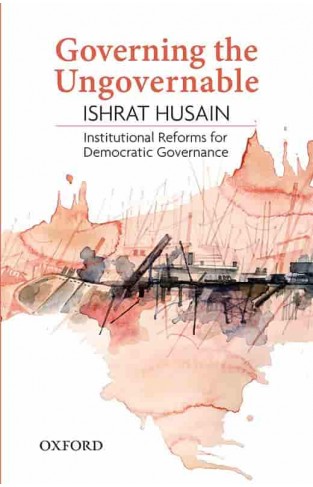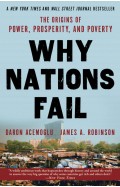- Home
- Urdu Books
- Children's Urdu Books
- Business & Management
- Business & Economics
- Governing the Ungovernable
Governing the Ungovernable
By: Dr. Ishrat Husain, Sarah Nizamani, Shagufta Shabbar and Masood Siddiqui
-
Rs 1,196.00
- Rs 1,495.00
- 20%
You save Rs 299.00.
Due to constant currency fluctuation, prices are subject to change with or without notice.
Pakistan, since its independence in 1947, had to face tumultuous years for the first four decades. Despite the many challenges, both internal and external, the country was able to register a 6 percent average annual growth rate during the first forty years of its existence. The country was ahead of India and Bangladesh in all economic and social indicators. Since 1990, the country has fallen behind its neighbouring countries and has had a decline in the growth rate.
This book attempts to examine the reasons behind this slowdown, the volatile and inequitable growth of the last twenty-five years, and through a process of theoretical and empirical evidence argues that the most powerful explanatory hypothesis lies in the decay of institutions of governance. It also suggests a selective and incremental approach of restructuring some key public institutions that pertain to accountability, transparency, security, economic growth, and equity.
Pakistan, since its independence in 1947, had to face tumultuous years for the first four decades. Despite the many challenges, both internal and external, the country was able to register a 6 percent average annual growth rate during the first forty years of its existence. The country was ahead of India and Bangladesh in all economic and social indicators. Since 1990, the country has fallen behind its neighbouring countries and has had a decline in the growth rate.
This book attempts to examine the reasons behind this slowdown, the volatile and inequitable growth of the last twenty-five years, and through a process of theoretical and empirical evidence argues that the most powerful explanatory hypothesis lies in the decay of institutions of governance. It also suggests a selective and incremental approach of restructuring some key public institutions that pertain to accountability, transparency, security, economic growth, and equity.
Pakistan The Economy of an Elitist State
By: Dr. Ishrat Husain, Sarah Nizamani, Shagufta Shabbar and Masood Siddiqui
Rs 824.00 Rs 1,030.00 Ex Tax :Rs 824.00
Pakistan Economic Challenges And Solutions
By: Dr. Ishrat Husain, Sarah Nizamani, Shagufta Shabbar and Masood Siddiqui
Rs 2,796.00 Rs 3,495.00 Ex Tax :Rs 2,796.00
Governing the Ungovernable
By: Dr. Ishrat Husain, Sarah Nizamani, Shagufta Shabbar and Masood Siddiqui
Rs 1,196.00 Rs 1,495.00 Ex Tax :Rs 1,196.00
Development Pathways
By: Dr. Ishrat Husain, Sarah Nizamani, Shagufta Shabbar and Masood Siddiqui
Rs 2,796.00 Rs 3,495.00 Ex Tax :Rs 2,796.00
Zubin Mehta: A Musical Journey (An Authorized Biography)
By: VOID - Bakhtiar K. Dadabhoy
Rs 472.50 Rs 1,050.00 Ex Tax :Rs 472.50
Shameful Flight: The Last Years of the British Empire in India - Paperback
By: Stanley Wolpert
Rs 823.50 Rs 915.00 Ex Tax :Rs 823.50
Sales Encyclopedia The Most Comprehensive How To Guide On Selling
By: Robert Chapin
Rs 671.25 Rs 895.00 Ex Tax :Rs 671.25
Why Nations Fail The Origins of Power Prosperity and Poverty
By: James A. Robinson
Rs 2,335.50 Rs 2,595.00 Ex Tax :Rs 2,335.50
The 10 Trillion Prize Captivating thely Affluent in China and India
By: Michael J. Silverstein
Rs 987.75 Rs 2,195.00 Ex Tax :Rs 987.75
Global Dexterity: How to Adapt Your Behavior Across Cultures without Losing Yourself in the Process
By: Andy Molinsky
Rs 1,262.25 Rs 2,295.00 Ex Tax :Rs 1,262.25
Poor Economics: The Surprising Truth about Life on Less Than $1 a Day
By: Abhijit Banerjee
Rs 2,076.00 Rs 2,595.00 Ex Tax :Rs 2,076.00
Switch: How to change things when change is hard - (PB)
By: Dan Heath
Rs 767.25 Rs 1,395.00 Ex Tax :Rs 767.25
The Great Degeneration: How Institutions Decay and Economies Die
By: Niall Ferguson
Rs 1,556.75 Rs 2,395.00 Ex Tax :Rs 1,556.75
Shameful Flight: The Last Years of the British Empire in India - Paperback
By: Stanley Wolpert
Rs 823.50 Rs 915.00 Ex Tax :Rs 823.50
No recently viewed books available at the moment.
Zubin Mehta: A Musical Journey (An Authorized Biography)
By: VOID - Bakhtiar K. Dadabhoy
Rs 472.50 Rs 1,050.00 Ex Tax :Rs 472.50
Pakistan The Economy of an Elitist State
By: Dr. Ishrat Husain, Sarah Nizamani, Shagufta Shabbar and Masood Siddiqui
Rs 824.00 Rs 1,030.00 Ex Tax :Rs 824.00
Pakistan Economic Challenges And Solutions
By: Dr. Ishrat Husain, Sarah Nizamani, Shagufta Shabbar and Masood Siddiqui
Rs 2,796.00 Rs 3,495.00 Ex Tax :Rs 2,796.00
Governing the Ungovernable
By: Dr. Ishrat Husain, Sarah Nizamani, Shagufta Shabbar and Masood Siddiqui
Rs 1,196.00 Rs 1,495.00 Ex Tax :Rs 1,196.00
Development Pathways
By: Dr. Ishrat Husain, Sarah Nizamani, Shagufta Shabbar and Masood Siddiqui
Rs 2,796.00 Rs 3,495.00 Ex Tax :Rs 2,796.00
Shameful Flight: The Last Years of the British Empire in India - Paperback
By: Stanley Wolpert
Rs 823.50 Rs 915.00 Ex Tax :Rs 823.50
















-120x187.jpg?q6)
















